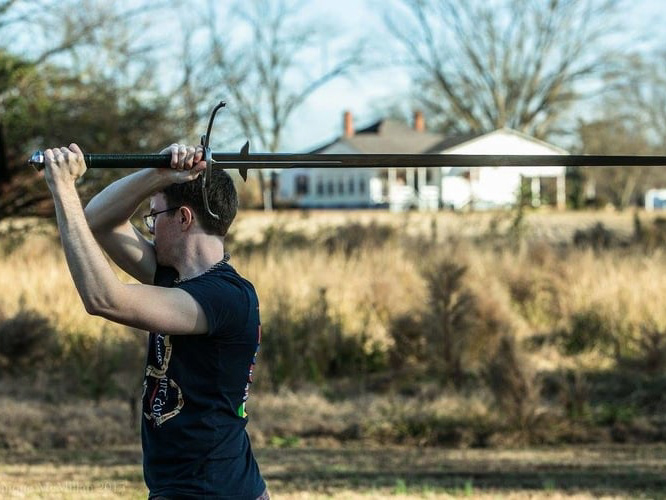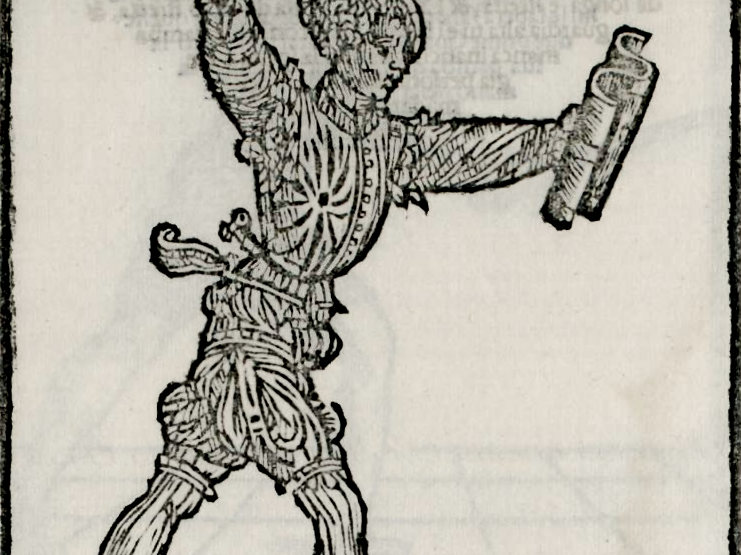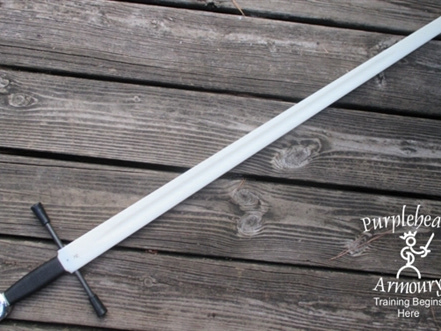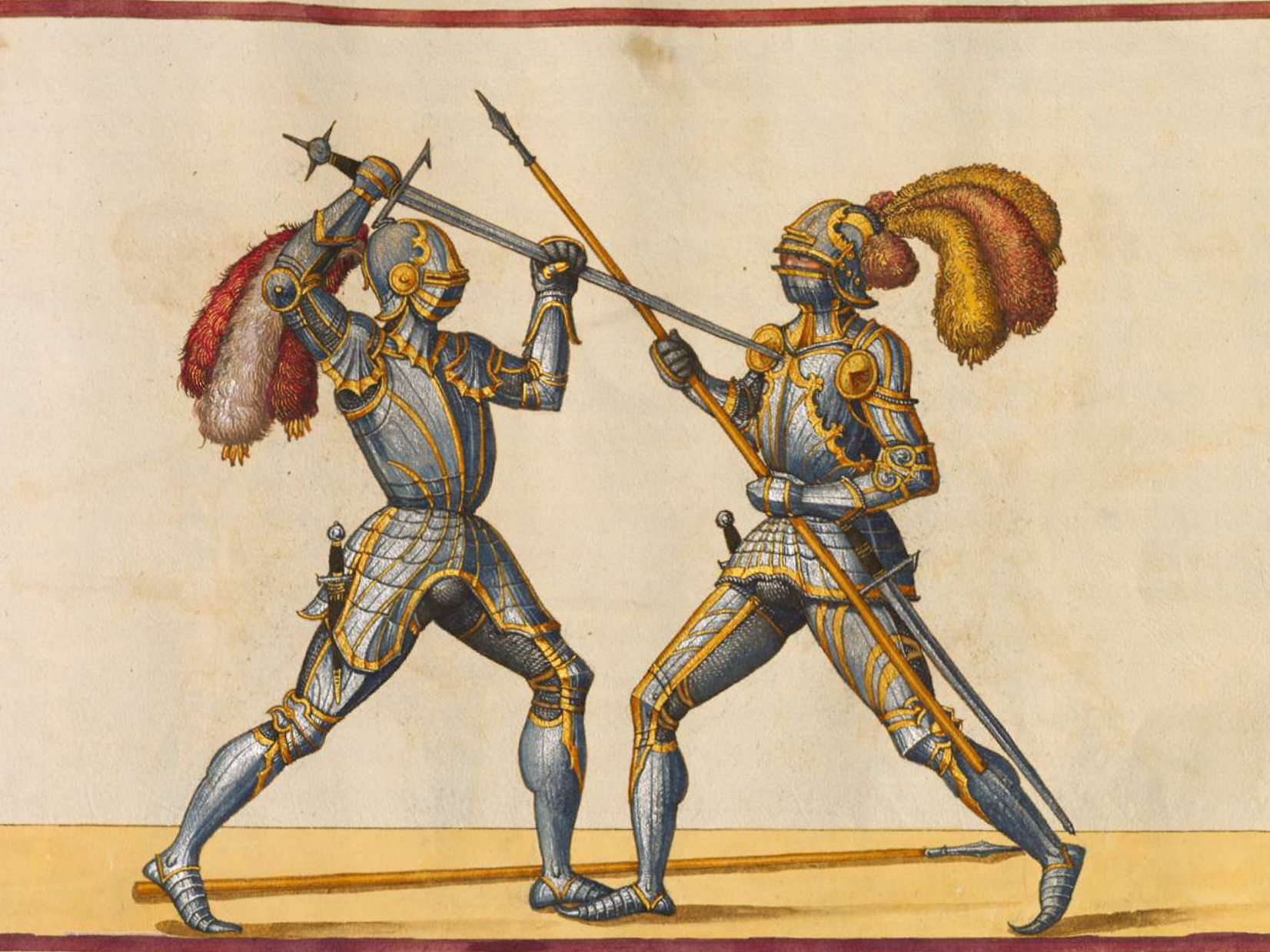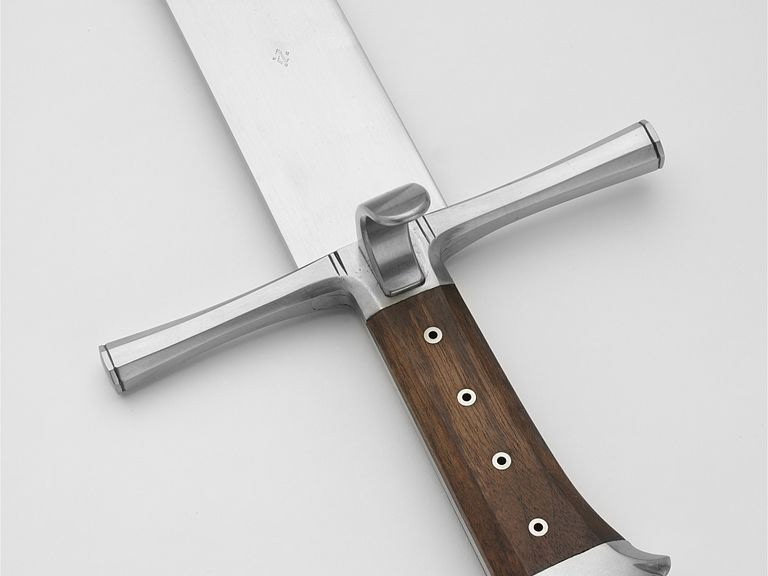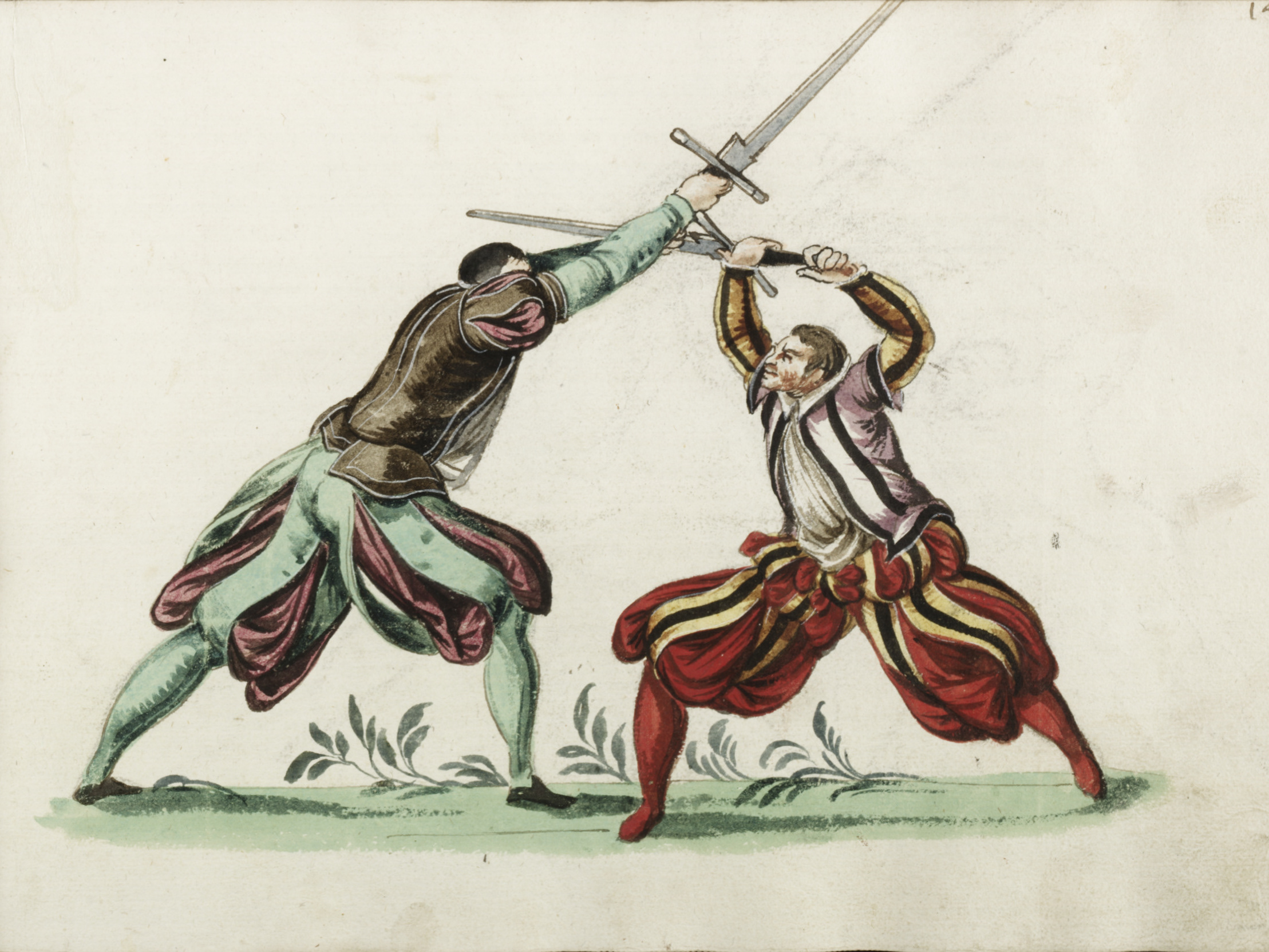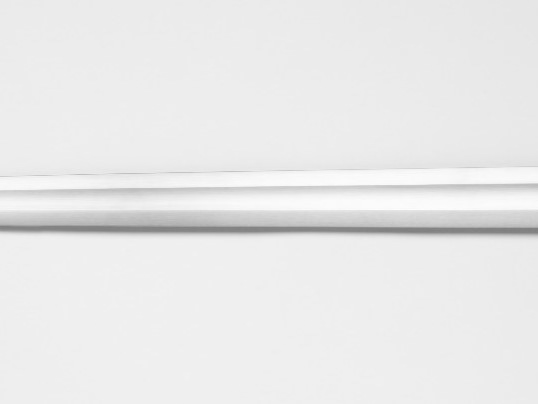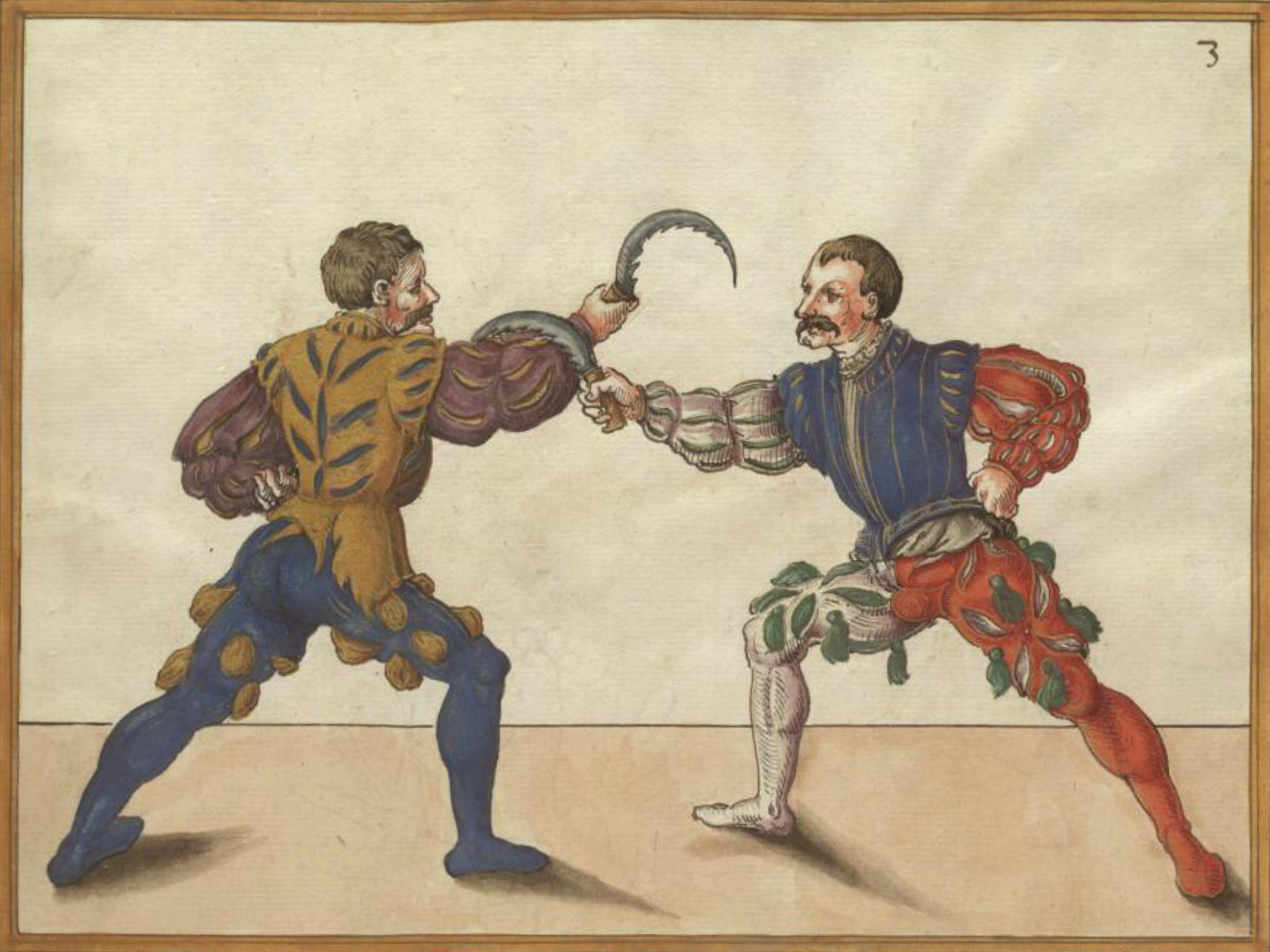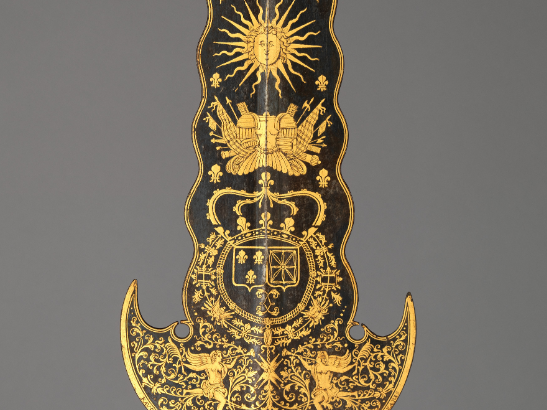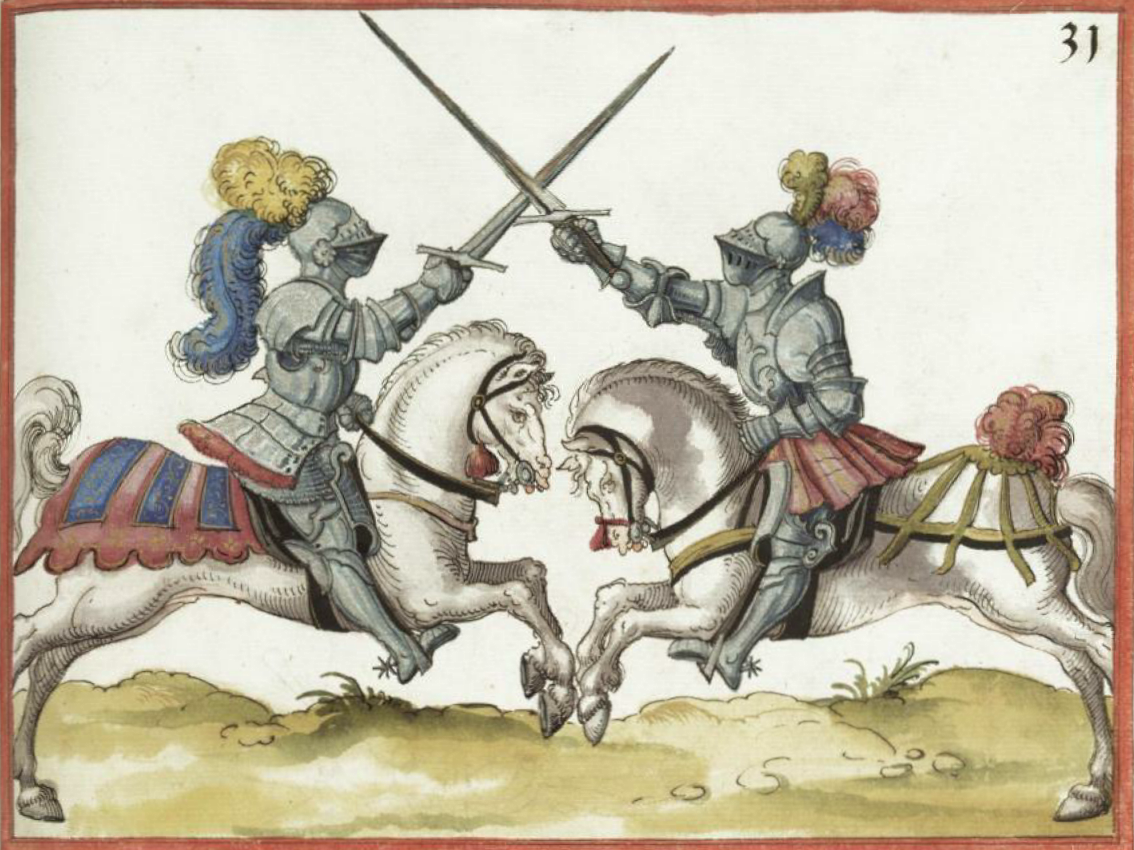Modern reproductions of traditional medieval daggers. Left: ballock dagger (a copy of Wallace Collection A732 by Arms & Armor, US). Middle: a typical later style of rondel dagger (by English Cutler, UK). Right: a dagger made by the photographer based on an original 14th-century dagger in the Museum of London (formerly in the Guildhall Museum).
Courtesy of Gammaflightleader.
A historical Swiss baselard dagger.
Courtesy of Hmaag.
A collection of bollock daggers salvaged from the Mary Rose.
Courtesy of Peter Crossman of the Mary Rose Trust.
A historical rondel dagger, possibly British in origin.
Courtesy of Metropolitan Museum of Art. Public Domain.
A breakdown of rondel anatomy.
Courtesy of The Metropolitan Museum of Art, edited by TOTA. Public Domain. Edited by Nicholas Allen
